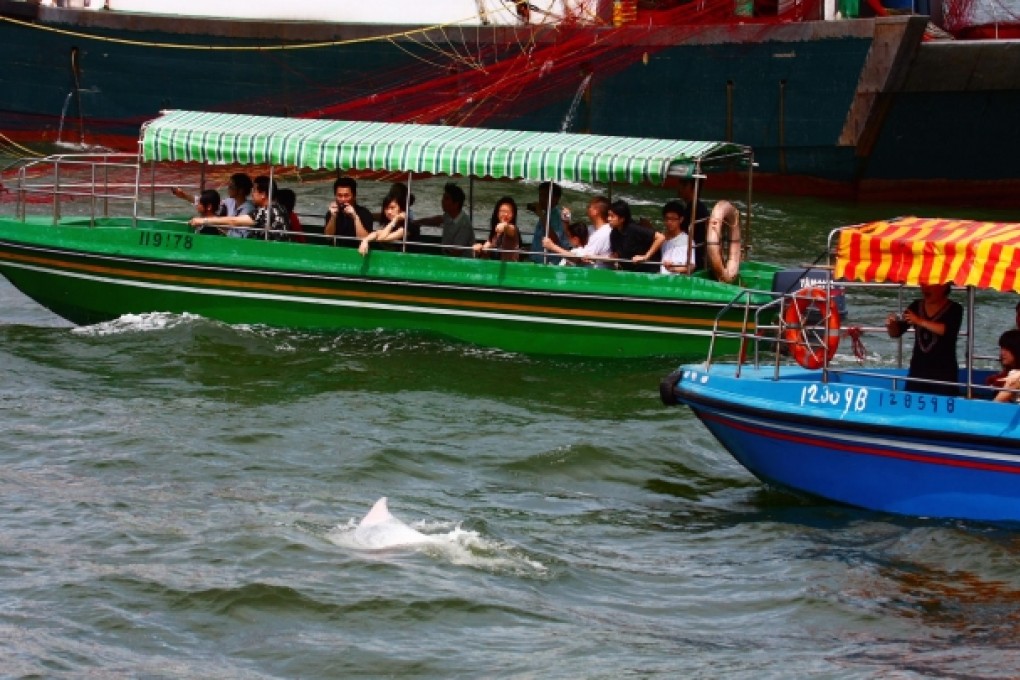Officials 'passing the buck' on fate of pink dolphins
Blaming boat tours for huge drop in numbers rather than bridge to Macau is disingenuous, says Dolphinwatch

The government has been accused of trying to pass the buck by claiming that boat tours are partly to blame for a dramatic decline in the number of pink dolphins in Hong Kong waters.

Spokeswoman Janet Walker said the department was nitpicking when the real danger was the construction of the Hong Kong-Zhuhai-Macau bridge, pollution and land reclamation.
Walker acknowledged that small cheap tours run out of Tai O were a possible nuisance to the dolphins, but said those trips were only a minor part of the threat.
"I just think they are trying to pass the buck. These boats are such a teeny weeny per cent of the problem compared to a damn great big bridge and airports in their habitat," she said.
"They are being disingenuous blaming dolphin-watching activities. I don't accept that."